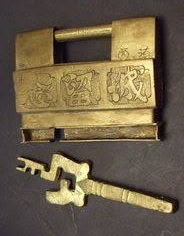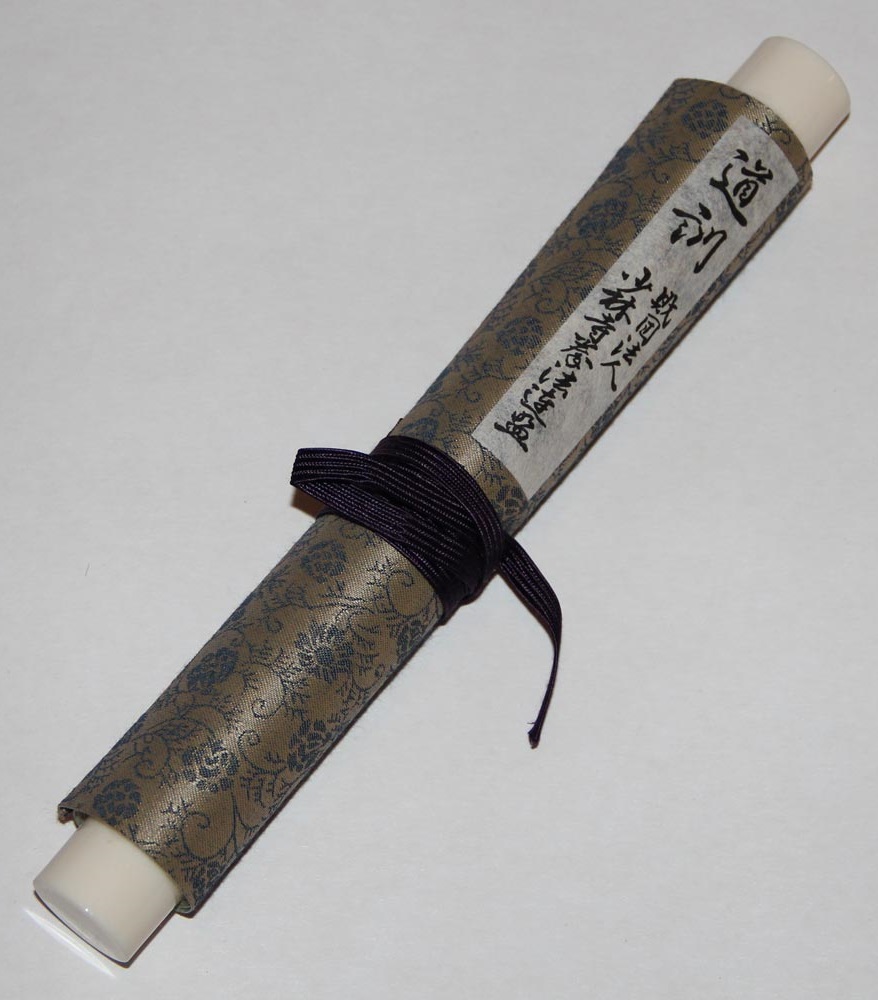Kihon Katachi Ichi Description
After bowing and announcing the name of the kata ("Kihon Katachi Ichi") ...
Yōi (cross open hands at groin level in
musubi dachi) and kiyomeri kokyū
(purification breaths)
Kamaete (shift right foot into nami heikō dachi
while closing hands into fists at knee width)
| 1 | Turn 90 degrees left into hidari zenkutsu dachi with hidari gedan barai | |
| 2 | Step forward into migi zenkutsu dachi with migi oizuki | |
| 3 | Turn 180 degrees right into migi zenkutsu dachi with migi gedan barai | |
| 4 | Step forward into hidari zenkutsu dachi with hidari oizuki | |
| 5 | Turn 90 degrees left into hidari zenkutsu dachi with hidari gedan barai | |
| 6 | Step forward into migi zenkutsu dachi with migi oizuki | |
| 7 | Step forward into hidari zenkutsu dachi with hidari oizuki, then immediately proceed to Step #8 | |
| 8 | Step forward into migi zenkutsu dachi with migi oizuki and kiai | |
| 9 | Turn 270 degrees left into hidari zenkutsu dachi with hidari gedan barai | |
| 10 | Step forward into migi zenkutsu dachi with migi oizuki | |
| 11 | Turn 180 degrees right into migi zenkutsu dachi with migi gedan barai | |
| 12 | Step forward into hidari zenkutsu dachi with hidari oizuki | |
| 13 | Turn 90 degrees left into hidari zenkutsu dachi with hidari gedan barai | |
| 14 | Step forward into migi zenkutsu dachi with migi oizuki | |
| 15 | Step forward into hidari zenkutsu dachi with hidari oizuki, then immediately proceed to Step #16 | |
| 16 | Step forward into migi zenkutsu dachi with migi oizuki and kiai | |
| 17 | Turn 270 degrees left into hidari zenkutsu dachi with hidari gedan barai | |
| 18 | Step forward into migi zenkutsu dachi with migi oizuki | |
| 19 | Turn 180 degrees right into migi zenkutsu dachi with migi gedan barai | |
| 20 | Step forward into hidari zenkutsu dachi with hidari oizuki |
Zanshin yame (withdrawing left foot, turn 90 degrees
left and return to kamaete)
Naotte (perform tekagami movement while sliding right
foot into musubi dachi)
Rei (bow)


 Zenkutsu dachi (meaning
"front [leg] bent stance") is one of the foundational
stances of Shitō-Ryū karate-dō.
Zenkutsu dachi (meaning
"front [leg] bent stance") is one of the foundational
stances of Shitō-Ryū karate-dō.  When
learning a new kata (or katachi, in
this case), it is important to remind
oneself of the adage: "Manabu no tame ni hyakkkai,
jukuren no tame ni senkai, satori no tame ni manga
okonau" (学ぶのために百回、熟練のために千回、悟りのために万回行う.).
A hundred times to learn, a thousand
times for proficiency, ten thousand
repetitions for complete understanding.
A related Okinawan saying is "ichi kata san nen"
(一型三年): one kata three years. Think
of it this way: it takes about 30 to 40 seconds to
perform Kihon Katachi Ichi. So in just ten
minutes per day for only ten days (or twenty minutes a
day for just five days), you can learn its correct
sequence of movements.
But to become truly proficient—to be able to perform it
correctly, and with the speed, power, timing, and bushi damashii (samurai spirit) necessary
to make its techniques effective in a real self-defence
situation—will take a thousand repetitions, which
equates to 100 days at ten repetitions a day.
And to fully understand and apply all of its principles,
nuances, and variations will take 1,000 days (three
years) at ten repetitions per day.
When
learning a new kata (or katachi, in
this case), it is important to remind
oneself of the adage: "Manabu no tame ni hyakkkai,
jukuren no tame ni senkai, satori no tame ni manga
okonau" (学ぶのために百回、熟練のために千回、悟りのために万回行う.).
A hundred times to learn, a thousand
times for proficiency, ten thousand
repetitions for complete understanding.
A related Okinawan saying is "ichi kata san nen"
(一型三年): one kata three years. Think
of it this way: it takes about 30 to 40 seconds to
perform Kihon Katachi Ichi. So in just ten
minutes per day for only ten days (or twenty minutes a
day for just five days), you can learn its correct
sequence of movements.
But to become truly proficient—to be able to perform it
correctly, and with the speed, power, timing, and bushi damashii (samurai spirit) necessary
to make its techniques effective in a real self-defence
situation—will take a thousand repetitions, which
equates to 100 days at ten repetitions a day.
And to fully understand and apply all of its principles,
nuances, and variations will take 1,000 days (three
years) at ten repetitions per day.